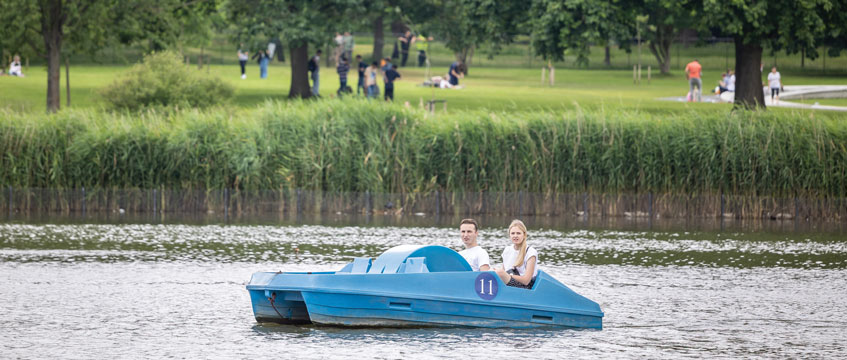Key points
- Whether an item on the land is a chattel or a fixture depends on the degree of annexation to the land and the purpose of annexation
- Where an item annexed to the land is removable, whether it is a fixture or a chattel depends on whether the purpose of annexation was to improve the land or the chattel
Is a boathouse on the Serpentine in London’s Hyde Park a chattel or part of the land? This was the question for the court in Royal Parks Ltd and another v Bluebird Boats Ltd [2021] EWHC 2278 (TCC); [2021] PLSCS 145. Hyde Park is owned by the Crown and managed by the first claimant, a charity and successor to the Royal Parks Agency.
The defendant has operated boating facilities for the public on the Serpentine since 1998. Under a contract dated 17 December 2004, the defendant agreed to replace the existing boathouse and jetties and to provide boating services at the lake with a percentage of turnover being paid to the claimants. The contract came to an end on 10 November 2020 and a dispute arose as to the ownership of the boathouse. Could the defendant remove the boathouse or had it become part of the land?
The principles
An object which is brought on to land may be classified under one of three heads. It may be (a) a chattel; (b) a fixture; or (c) part and parcel of the land itself. Objects in categories (b) and (c) are treated as being part of the land. It is a question of fact whether a particular object falls within one of those categories depending on the degree of and the object of the annexation (see Elitestone Ltd v Morris [1997] 2 EGLR 115). The court applied the following principles, distilled from the authorities, in determining the issue:
i) A structure will be a fixture where it is permanently fixed to the land and can only be removed by demolition and the purpose of annexation is that it should form part of the land.
ii) A structure which sits on the land and is otherwise unattached will be a chattel.
iii) Where the structure is annexed to the land but potentially removable the purpose of annexation is key; if the purpose was the permanent and substantial improvement of the land it will be a fixture, but where the purpose is temporary or where the annexation was for the enjoyment and use of the structure, it will be a chattel.
iv) The test as to the degree and purpose of annexation is an objective one, unaffected by the parties’ subjective intention or any contractual arrangements.
The contract
The contract required the defendant, at its expense, to replace the existing boathouse and jetties. The defendant committed to investing a total of £506,000, which was depreciated over the term of the contract.
The contract defined “premises” as those owned or occupied by the first claimant and from which services were performed but it did not specify the ownership of the boathouse. The defendant was granted a non-exclusive licence to occupy. It was also obliged to maintain the boathouse and to be responsible for dilapidations at the end of the term.
The structure
The new boathouse – completed on 9 September 2008 – comprises a purpose-built single-storey building with a structural steel frame. It has heating, electricity, a cold-water supply and drainage. The building is constructed on an area of hardstanding projecting from the pavement which comprises a concrete ground-bearing floor slab supported by screw-piled foundations that are driven into the ground.
While it is possible to remove the superstructure, not all of the main structural steel frame could be removed and reused. Additional works would be required to provide foundations, a floor, a roof and new services.
The decision
The court decided that the boathouse comprised both the superstructure and the substructure of the building: there was a permanent connection between the two which could only be broken by severing the fixings. The degree of annexation also meant that the structure was permanently fixed to the land. While the superstructure could be removed, the additional works required amounted to a new construction.
The boathouse was constructed for the purpose of permanently and substantially improving the land, and the requirement for the defendant to provide capital investment in Hyde Park supported this. The boathouse was also inextricably linked to the boating concession, a service which could only be operated from the lakeside. The boathouse fell within the definition of the premises belonging to the claimants: the defendant was not entitled to remove any part of it.
Estoppel
The defendant’s claim that the claimants were estopped from denying the defendant’s ownership of the boathouse also failed. The required elements to establish an estoppel were not made out: there was no evidence of any encouragement by the claimants to the defendant to believe that it would retain ownership or rights in the boathouse once constructed, and silence by the claimant on this point was insufficient; there was no detrimental reliance by the defendant on any belief as to ownership of the boathouse – the contract imposed an investment obligation on the defendant and a mechanism for depreciation of that investment over the term of the contract; and since there was no contemporaneous intimation from the defendant that its expenditure on the boathouse was made pursuant to a belief that it would retain ownership, it was not unconscionable for the claimants to rely on their rights of ownership and occupation.
Louise Clark is a property law consultant and mediator









